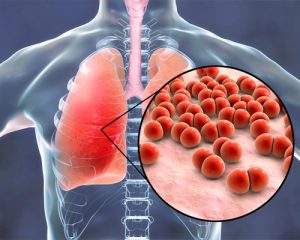 Every year, lung diseases affect millions around the globe. This guide is particularly for the recently diagnosed and caretakers unfamiliar with their loved ones’ illness. It provides clear information about lung diseases, causes, and symptoms. The present article will review important lung diseases, including chronic obstructive pulmonary disease (COPD), asthma, bronchitis, and lung cancer. The article will discuss the prevention methods and regular checkups for maintaining healthy lungs, with some case studies provided.
Every year, lung diseases affect millions around the globe. This guide is particularly for the recently diagnosed and caretakers unfamiliar with their loved ones’ illness. It provides clear information about lung diseases, causes, and symptoms. The present article will review important lung diseases, including chronic obstructive pulmonary disease (COPD), asthma, bronchitis, and lung cancer. The article will discuss the prevention methods and regular checkups for maintaining healthy lungs, with some case studies provided.
Lung diseases refer to conditions that have an implication for lung function, variable in intensity from mild to moderate to very severe, affecting breathing and general health.. Most of the time, lung disease symptoms include shortness of breath, a cough, or, quite rarely, chest pain. These symptoms may vary in severity from person to person, but early diagnosis is a must for treatment and management.
The importance of early detection in lung diseases cannot be overemphasized. Many of the nascent symptoms of lung diseases could be a mild cough or minor discomfort in breathing and could often go undetected until serious consequences appear.
Mild lung disorders could display symptoms easily managed merely by lifestyle changes and little medical interventions. One good example is mild asthma,whereby dust, pollen, or respiratory infections trigger episodes of mild shortness of breath accompanied by wheEZing.
A situation in real life: Sara, who is 32 years old and a teacher, found breathlessness in periods of pollen influx. At her consultation, her doctor prescribed an inhaler and counselling on avoiding some specific triggers. Early intervention and lifestyle changes markedly improved and controlled her symptoms. Along with her management plan, Sarah was advised to keep a close check on her “lung disease symptoms.”
Moderate lung diseases usually require more active medical management than mild ones. Bronchitis is an upper respiratory tract infection (present for more than three weeks) that may follow an infection or be due to sustained exposure to pollutants and can present with mild or moderate symptoms of a cough with sputum associated with fever.
Most patients cite cough and other symptoms they recognize as “lung disease symptoms” as interfering with their days. For example, the story of John describes a construction worker aged 45 who developed progressive cough and mild chest pain after multiple episodes of bronchitis. His doctor recommended antibiotics and rest with fluids; John improved gradually but was warned to take precautions to prevent recurrent infections.
Severe lung disorders often impact an individual’s quality of life tremendously. Two such conditions, COPD or chronic obstructive pulmonary disease (COPD) and lung cancer, become life-threatening without timely intervention. COPD results from long-standing exposure to irritant particles and gases-cigarette smoke and air pollution-which produces appreciable breathlessness to severely limit physical activity.
Lung cancer, conversely, involves the unregulated division of abnormal cells in lung tissue; it is most often linked to long-term cigarette smoking, yet genetic predisposition or environmental exposure may also affect non-smokers. Symptoms of lung disease including unexplained coughing, fatigue, or weight loss should be followed up with a consultation to the healthcare provider as soon as possible.
Real-life example: Observable to Michael, at 60, a former smoker, were signs he called minor “lung disease symptoms”: intermittent coughing and fatigue. Months later, his condition worsened, and he was diagnosed with early-stage lung cancer. His story points to the need for paying attention to even slight variations in health and seeking professional help as soon as anything goes wrong.
 Chronic Obstructive Pulmonary Disease (COPD)
Chronic Obstructive Pulmonary Disease (COPD)COPD is an insidious progressive lung disease dealing chiefly with emphysema and chronic bronchitis. It is characterized by the obstruction of airflow from the lungs, causing difficulty in breathing and lesser intake of oxygen. Patients suffering from COPD frequently show symptoms of “lung disease,” including chronic cough with sputum production and shortness of breath. Other risk factors in the long term include smoking, exposure to air pollution, and occupational hazards.
New guidelines for prevention and management of COPD are developed and revised over time by the World Health Organization (WHO) and the Centers for Disease Control and Prevention (CDC). Both organizations prioritize lifestyle modifications, particularly smoking cessation, physical activity, and a healthy diet, as significant factors in interfering with the progression of the disease.
Asthma is one of the most prevalent chronic lung diseases, particularly among children and young adults. It is characterized by inflammation of the airways and interest in relating to narrowing of the airways, resulting in recurring episodes of wheezing, chest tightness, and breathlessness. Multiple asthma subjects relate to the phrase “lung disease symptoms” as they experience these intermittent episodes that may worsen in the presence of a trigger such as allergens, smoke, or respiratory infections.
Asthma management can incorporate inhaler or oral medications, avoiding known triggers, and education on self-management and regular monitoring. WHO and CDC guidelines will provide much greater attention to the development of an asthma action plan, covering the use of medications, when to use them, and when to seek emergency care.
Bronchitis denotes inflammation of the bronchial tubes, which carry air to and from the lungs. There are two types of bronchitis: acute and chronic. Acute bronchitis is usually due to viral infections while chronic bronchitis is usually associated with prolonged exposure to irritable substances such as tobacco. The patients, here, mostly experience “lung disease symptoms” in the form of productive cough, mild fever, and malaise. The acute form generally resolves within months, whereas chronic bronchitis might be subject to prolonged management and lifestyle changes.
Preventive measures may include stopping smoking, avoiding polluted environments, and getting vaccinated against respiratory infections, which may greatly help reduce the incidence of bronchitis episodes.
Lung cancer ranks among the most aggressive of all lung diseases given the high mortality rate. The late-stage diagnosis of lung cancer accounts for the highest mortality rates. The development of lung cancer is most commonly associated with long-term smoking, although others may be genetically disposed to it or may continue to develop the disease due to non-oncogenic environmental factors such as exposure to radon gas. The presence of early “lung disease symptoms,” such as change in the character of a cough, blood in sputum, or unexplained weight loss, should lead to an early visit to a physician.
New WHO and CDC guidelines state that early detection by screening methods, utilizing low-dose computed tomography (CT) scans, is critical for achieving better outcomes. Depending on the stage of the cancer, treatment may consist of surgery, chemotherapy, radiation, or targeted therapies.
Prevention is one of the principal management avenues for lung diseases. Lifestyle modalities and environmental modifications can prevent or retard the pace of lung diseases. Changes in breathing or the functional status of the lung should be appreciated, regardless of whether the symptoms are weak or strong.
Changing these few habits can bring a large change in lung health and general well-being. Many patients believe that taking these measures on the preventive front can actually help them reduce recurrent “lung disease symptoms” to a large extent and live happily.
Understanding real-life examples can help illuminate the importance of early detection and appropriate treatment. Consider the story of Emma, a 40-year-old office worker who experienced mild shortness of breath and occasional coughs that she initially ignored. Her routine annual checkup eventually revealed early signs of COPD. With prompt action, Emma worked with her healthcare provider to implement smoking cessation, start pulmonary rehabilitation, and adopt a healthier lifestyle. Emma’s journey underscores how responsive care can limit the impact of chronic lung conditions.
Another inspiring case is that of Robert, a 55-year-old non-smoker who was diagnosed with asthma in his early thirties. Although his condition was moderate at times, regular checkups and adherence to an asthma action plan enabled him to live an active life. Robert’s story emphasizes the importance of monitoring “lung disease symptoms” even when they appear manageable.
Regular monitoring of your lung health is essential, especially if you experience any “lung disease symptoms.” Early diagnosis and proactive treatment are key to managing lung conditions effectively. The following steps can help you schedule regular lung health checkups:
By taking these steps, you can stay proactive about your lung health and take advantage of early intervention methods. Remember, the management and prevention of lung diseases are not just about treating symptoms—they are fundamentally about leading a healthier life.
Lung diseases such as COPD, asthma, bronchitis, and lung cancer continue to impact many lives globally. Understanding the causes, recognizing early “lung disease symptoms,” and making essential lifestyle adjustments are critical steps in managing and preventing these conditions. By following the current WHO and CDC guidelines and monitoring symptoms closely, patients and their families can work together with healthcare professionals to ensure the best possible outcomes.
This comprehensive guide has explored both the mild and severe spectrums of lung conditions, highlighted preventive strategies, and shared real-life experiences to provide insight into living with chronic lung diseases. Most importantly, it emphasizes that regular checkups and proactive management are cornerstones of effective lung health care.
Whether you are currently experiencing symptoms or simply aiming to prevent future issues, staying informed and vigilant about lung disease symptoms is essential. Taking the right steps early can greatly influence your long-term respiratory health.
We hope that this guide has provided you with valuable information and actionable insights that empower you to take control of your lung health. Remember, early detection—even of mild “lung disease symptoms”—can be life-changing.
Take charge of your respiratory health today. To schedule your next lung health checkup, follow the steps above, and speak with your healthcare provider about the best plan for you and your family. A proactive approach can make all the difference.